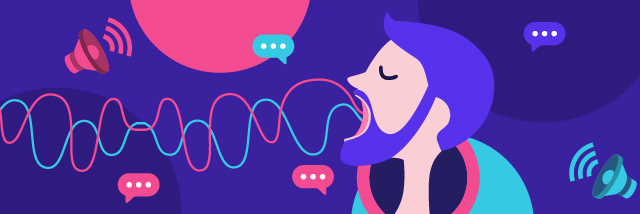9D Audio is making strides in the audio production world, and particularly amongst online creators. Is it a meaningful construction though, or just a passing fad? Weren’t we up to 8D audio just a tiny bit ago, anyway?
In this article we take a look at 9D audio, it’s history and future. Most importantly, we try to ascertain what it means for content creators, particularly for audio ad design.
Listen to the TLDR(Too Long Didn’t Read) version of this article:
Or if you prefer to watch a video instead, click here:
This article was updated on March 2021
8D Audio: The Predecessor of 9D Audio
9D audio is really the continuation of 8D audio. It can be said that 9D is basically 8D with a few more things, which we will explore.
8D audio includes effects that somehow give the sensation of ‘movement’. The idea is that the listeners will be able to feel the music ‘moving’, indeed surrounding them. Some experts have pointed out that 8D audio simply creates some effects which give the illusion of 360-degree movement, though not much more than that. We will examine these claims shortly.
A creator of 8D versions of popular music explains the allure of these effects in a seasoned audio creator: “He first discovered the 8D effect though a 2017 upload of Alan Walker’s “Faded,” which impressed him because of “how I could feel the music around me, like I was in another place using only my headphones,” (…) Experiencing the sensation sparked a rush to research how to create the effect — while Correa liked what he heard, he had an inkling that he could improve upon what a handful of people had already made.”

Why the Names 8D and 9D audio?
It is worth pointing out that the names of 8D or 9D are just that, just names. They are marketing more than anything else, meant to imply the effect that such audio will cause on the listener. They do not mean that there are 8 or 9 dimensions to the music.
Likewise, the names 16D, 14D or 100D do not really mean that they are creating audio with 16 or 14 or 100 dimensions. It is only a figure of speech, denoting audio with added sound effects and sensations. They all do more or less the same thing, or at least strive to do so, adding this or that, as they evolve and thus are given a new name.
Headphones
Evidently, the use of headphones will allow us to really feel and hear these effects. This is really the only way to accrue the benefits of 8D or 9D audio. This obviously shows us that these effects may only really work in certain content. Crucially, audio ads do seem to be a perfect format to carry 8D and 9D audio effects. The listener is already wearing headphones and this audio format will be a great way to communicate a message to them.
Binaural Recording
8D audio attempts to mimic a binaural recording, whereby there is a sensation of hearing sounds in space, relative to the position of the human head. Normal stereo recordings, on the other hand, only direct sound to the left and right speaker channels.
Check out this example of an 8D version of Queen’s ‘Bohemian Rhapsody’ to try to get the feel of what this all about. We will come to appreciate that the 8D or 9D audio effects in songs have a different feel to those same effects in other audio formats, but for now, take a listen. Remember to wear headphones:
Evidently, the song seems different from the original version, and yet the same. The key is in the methods used by the audio producer. The following are the most important:
Reverb
The use of the reverb, for one, is essential. It creates the illusion that sound is being transmitted across a large space.
Stereo Panning
Stereo panning is also important, as it creates the effect of a left-to-right movement of the music. In this way the listener feels this particular ‘enveloping’ of sounds.
Are 8D audio and 9D audio worth it?
Some experts posit that apart from these simple effects, 8D audio does not offer much else. Some audio creators, however, are still very excited about 8D audio and its possibilities.
Several audio experts point out that there is not much more to 8D audio than this illusion or sensation of movement: “There’s no actual new recording with 8D mixes of pre-existing songs. Instead, 8D music creators are using software that can manipulate a song’s various stereo parts, placing and moving them within a virtual 360-degree space.” Others remain quite committed to the possibilities.
Great Content First
The key of course, to really squeeze out the benefits of 8D or 9D audio is to do great copy and audio work, first and foremost. It is not simply a matter of creating the illusion of movement in the sound as a sort of gimmick. The idea is that the effects must be seamless, interesting and highlight the content that is already there, to serve a specific purpose. An expert audio producer explains: “There are a few different ways you can make it, but it’s really distinguishable when someone makes 8D correctly. When it’s done wrong, the music doesn’t sound like it’s in the room with you. It just pans back and forth.”
Experience is Key
Adding 8D and 9D audio is also very dependent on the experience of the audio producer. At first glance, 8D audio seems to only be the inclusion of certain effects and that’s it. The thing with 8D and 9D, however, is that practice makes perfect and only seasoned practitioners will really make it work. A more amateur incorporation of 8D or 9D may have unintended effects on the listener, even sounding cartoonish.
Indeed, at the beginning, 8D effects seemed to create a rather crude illusion of movement, and not much else. As more audio enthusiasts have been making their tracks and gaining experience, they have been creating more layered and careful effects. It is important to note, however, that the range of effects does seem rather limited. Again, the content must be strong and work in itself; 8D and 9D should be an additional layer on top of strong content.
What About 9D Audio then?
9D audio is a sort of continuation of 8D audio. The main difference is that with 9D audio, the vocal and instrumental parts are isolated from each other and thus there is another layer of effect. The vocal part and the instrumental part are sort of ‘naked’, and independent, panning left to right. Listen to this Billie Eilish song in 9d audio:
The difference between 8D and 9D audio is therefore quite simple. In 9D audio, the vocal and instrumental parts are isolated from each other, so there is that added effect to the whole mix. That seems to be it, for now.
Use in VR and Video Games
Perhaps the use of this technology in music is questionable. At the end of the day, producing versions of popular songs incorporating these effects may be amusing or interesting, but 9D audio really does make a difference in other areas.
Two such areas are virtual reality and video games. These two contents may profit immensely from the use of 9D audio. The reason is that the person using a VR headset or even playing videogames (with headphones on) may really profit from a sensation of space and movement.
Audio Ad Application
The use of 9D audio (and 8D audio for that matter) in audio ads is perhaps the most intriguing, as we mentioned. Audio ads, as we know, are aimed at someone who is most likely wearing headphones. This is an ideal target audience for audio ads incorporating 9D audio.
Having said that, however, we must remember a point we have been stressing. 9D audio must be added on top of content which already works. We must create great audio ad copy before we even attempt to incorporate these sound effects.
Creating 9D Audio Content: Tips and Tricks
Now then, it is quite obvious that using 9D audio must be done wisely. It is not just a matter of adding effects for no reason at all. What we want to concentrate on, is on adding these effects in a coherent way, so that they really make the content stand out.
Check out this audio, of a barber cutting someone’s hair. It is a good example of similar sound effects to the ones we have been examining. It is very easy to imagine how it could be worked into an effective audio ad:
Imagine crafting an audio ad for a barbershop, which incorporates these effects. It would work with very tight basics: (i) Tightly crafted ad copy which works in itself and (ii) a use of 9D audio which highlights the ad and adds another layer of meaning.
This spells out the need to acquire talent who are able to (i) write great copy and (ii) produce an audio ad from start to finish. What we really want is a provider who is able to create a ready-to-use ad. The surest bet is to acquire all this in one place.

The Bunny Studio Way
Now then, this is all fine and good, but where can we create content incorporating 9d audio? This is where online outsourcing hubs come in.
Bunny Studio, for one, is able to craft audio ads from start to finish. Such a process incorporates a plethora of talent who are already vetted, experienced, and committed to achieving the best possible results. Most importantly, Bunny Studio can deliver a ready-to-use audio ad incorporating 9D audio.
Conclusion
To conclude, perhaps we should point out that 9D audio is quite controversial. For some, it is a very worthy pack of effects to add to audio content. For others, it is a rather trivial gimmick.
We believe that 9D audio may be used in audio ads with success. It can grab the attention of someone listening and is therefore useful. We must point out, however, that the use of these effects must be made on top of content and copy which are already very strong.










